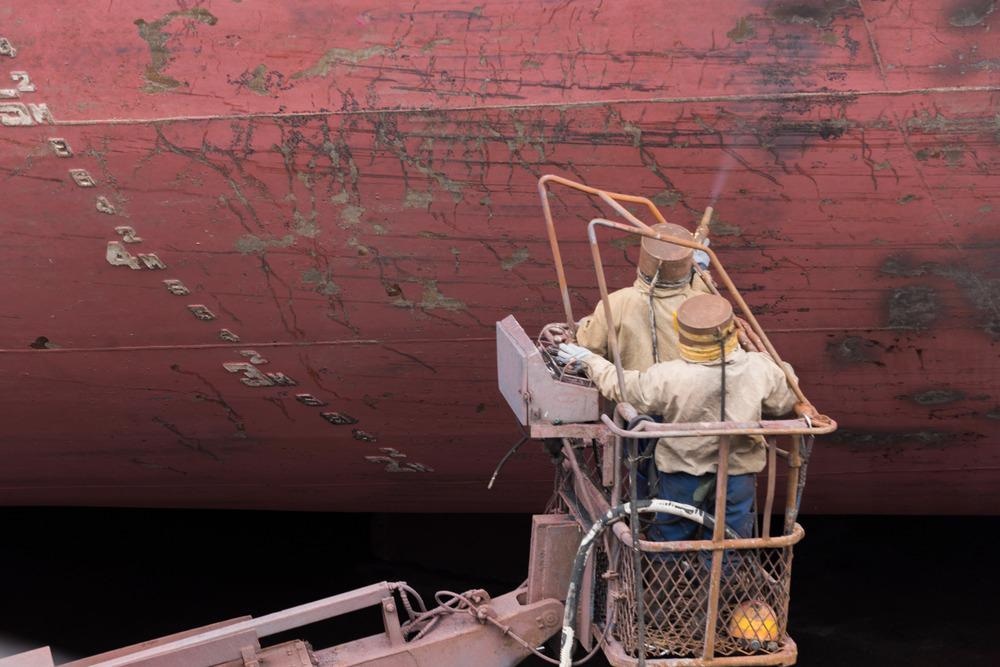In an article recently published in the journal Desalination, investigations were made to remove microorganisms from water using membrane-based filtration processes employing graphene composites/carbon nanotubes using electrical conduction to generate bubbles.

Study: Electrically conductive carbon nanotube/graphene composite membrane for self-cleaning of biofouling via bubble generation. Image Credit: Aytug askin/Shutterstock.com
Biofouling – A Facilitator of Bioinvasion
Biofouling is an unwanted buildup of algae and microorganisms on immersed assemblies (especially boat exteriors), and is one of the major facilitators for bioinvasions. Biofouling has been demonstrated in studies to be a substantial vector for the spread of invasive aquatic organisms.
Ships carrying biofouling may present invasive marine species into state watercourses, posing harm to humans, animals, and plants, social and economic activities, as well as the freshwater habitats.
Role of Biofilms in Biofouling
Biofouling is facilitated by the formation of biofilms. Biofilms are formed when microorganisms cling to materials. Biofilm-associated cells can be distinguished from their flocculated counterparts by the production of an extracellular polymeric substance (EPS) structure, slower growth rates, and gene regulation. Adhesion is a complicated process that is influenced by the growth media, substrate, and cytoplasmic membrane.
Understanding biofilms is enormously significant for community well-being due to their involvement in some transmittable ailments and their significance in an array of gadget-related contaminations. A detailed comprehension of biofilm subtleties ought to lead towards new and better operative biofilm control procedures, while contributing to better patient care.
Methods of Removal of Bioinvasion
Membranes are discriminating blockades that allow components of varying dimensions or physiochemical characteristics to be segregated. The choice, as well as the porosity of the membranes employed, determine the effectiveness of a separation process.
The rejection of the undesirable component and the penetration of the desired molecule determine selectivity, or the capacity to separate solutes, pollutants, and particles with varied sizes or physical/chemical characteristics. The trans-membrane flow is used to measure membrane permeability, which is controlled by pore diameter and surface features.
Problems With These Methods
As a result of the adsorption and accumulation of foulants contained in feed mixes on the porous matrix, the effectiveness of membrane pores might be harmed. Furthermore, contamination on the surface of the membrane necessitates vigorous and regular physicochemical and biological cleaning, raising the membrane process's operational costs.
Numerous chemical procedures are used to eliminate the bacteria and remove biofouling from the membranes. On the other hand, chemical cleaning procedures present the problem of generating resistance in microbes and eroding the surface of the membrane.
Electrified Membranes – A Potential Solution
Electrified membranes (EMs) have recently been shown to have the ability to solve membrane fouling by adding electroactivity as a new membrane function.
EMs are intended to enhance the significance of membrane further than straightforward segregation by leveraging a number of processes, such as electrolytic reduction and oxidation, while adding to the classic transmembrane functionalities of solute segregation by hydrophobic interactions and charge confinement.
Electrically conductive substances (e.g., metal alloys, carbon-based nanostructures and composite materials) are seamlessly integrated into the membrane as permeating electrodes to eliminate biofouling, and an electromotive force is applied across the electrodes to achieve this feature.
An Investigation into the Bubble Generation Method to Eliminate Biofouling
In this study, the usefulness of electrically conductive carbon nanotube (CNTs) membranes was investigated. The researchers created a graphene-based nanostructure membrane to self-clean the biofouling by applying electrical voltage and generating a trans-membrane bubble to eliminate the microorganisms at the surface.
The membrane was made by combining CNTs and graphene, which also allowed researchers to test the impartiality of microbes from the structure. The resultant membrane was employed as an in situ chemical treatment electrode using a common biofoulant (microbial, for example). The consequences of various potential and self-cleaning durations on recovery of flux were also studied systematically.
The findings of this study illustrate the extraction effectiveness and highlight the exclusion objective of self-cleaning for biofouling, as well as a self-cleaning approach.
The Future – What To Look Forward To?
Since clinical and public health microbiologists realize that microbial biofilms are prevalent in nature, a variety of infectious clinical conditions have been studied from a biofilm viewpoint. Efforts are being made to understand the removal processes of such microorganisms from a structure.
Reference
Lee, J. H., Yun, E.-T., Ham, S.-Y., Kim, H.-S., Sun, P.-F., & Park, H.-D. (2022). Electrically conductive carbon nanotube/graphene composite membrane for self-cleaning of biofouling via bubble generation. Desalination. Available at:https://www.sciencedirect.com/science/article/pii/S001191642200296X?via%3Dihub
Disclaimer: The views expressed here are those of the author expressed in their private capacity and do not necessarily represent the views of AZoM.com Limited T/A AZoNetwork the owner and operator of this website. This disclaimer forms part of the Terms and conditions of use of this website.